Rules for planting and caring for jasmine
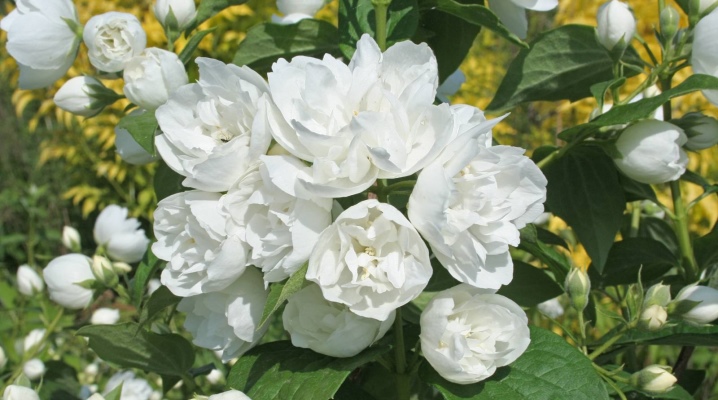
Jasmine (Jasminum) is a typical member of the Olive family and has over 300 species. The plant is represented by a climbing or erect shrub with large beautiful flowers of regular shape and leaves of a simple, trifoliate or unpaired type. Due to the wide variety of forms, jasmine is very popular not only among summer residents and owners of private houses, but also among lovers of indoor plants, so the issues of planting and caring for shrubs remain relevant.
Timing
Jasmine can be planted twice a year - in spring and autumn. There are no strict dates for planting a plant, so every gardener chooses the right time based on his climate. In mid-latitudes, shrubs begin to be planted in mid-May, and in the southern regions and in the Black Earth Region - at the end of April. As for areas with a sharply continental and temperate climate, planting jasmine can only be started if the threat of return frosts has completely passed.
For the middle zone, including the Moscow region, it will be the end of May, and for others - the beginning of June. However, experienced summer residents say that it is possible to plant young jasmine cuttings throughout the summer, since they take root well and have time to gain strength before the onset of cold weather. Autumn planting of jasmine is carried out in late September - early October, which also depends on the climate.
According to most gardeners, seedlings of spring and summer planting take root better than autumn ones.
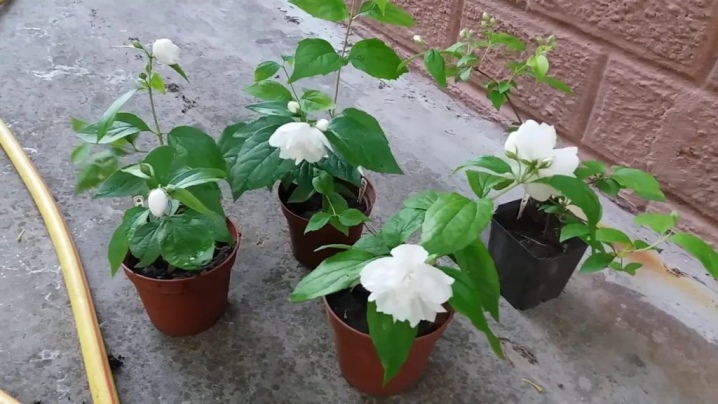
Choice of location and favorable conditions
Jasmine can be grown both at home (indoor varieties) and on a personal plot. The plant is quite unpretentious and is able to quickly adapt to any conditions. However, for a more lush and long-lasting flowering, the bush needs to create comfortable conditions.
Jasmine loves well-lit areas that are protected from wind and drafts, so if there is such an opportunity, it is better to plant it near the wall of the house or near the fence. In jasmine growing in the wind, decorativeness is noticeably reduced - the flowers become smaller and less bright, and they stay on the branches for a relatively short time. When growing indoor species, the jasmine pot should be placed on the sunniest window. With a long-term presence of a plant in a shaded space, its growth slows down and development begins to lag behind, and flowering becomes scarce and short-lived. Species growing in open ground are allowed to be planted in light shade, but with the expectation that they will be in the sun for most of the day.
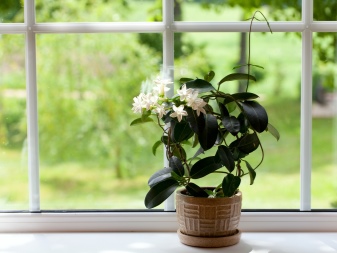
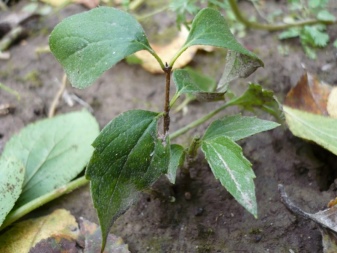
Jasmine grows well on any soil, however, for a more spectacular flowering, it is better to provide it with a nutritious substrate. The ideal option would be a mixture of leafy humus, sand and sod land, taken in equal parts. Jasmine should not be planted on clay soils. This is due to the fact that air circulates very poorly in clay and water stagnation often occurs. Such conditions can lead to freezing of the root system of the bush in winter, which will entail the death of the plant.
For indoor species, ready-made soil mixture purchased at a flower shop is suitable. At the bottom of the pot, drainage must be laid, which is used as expanded clay or river pebbles.Both outdoor and domestic species do not like excessive moisture in the soil and tolerate a lack of liquid much more easily than an excess of it. Therefore, it is better to plant jasmine on higher elevations or equip the planting pits with a drainage system. To do this, a layer of broken brick, large crushed stone or expanded clay with a thickness of at least 20 cm is placed on the bottom of the pits. 5 cm of sand is poured on top, and only then a nutritious substrate is placed.
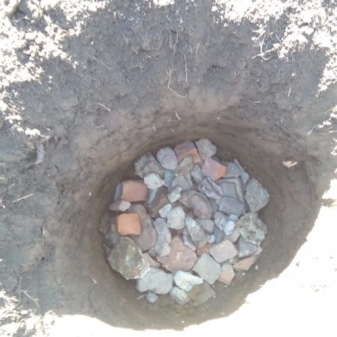
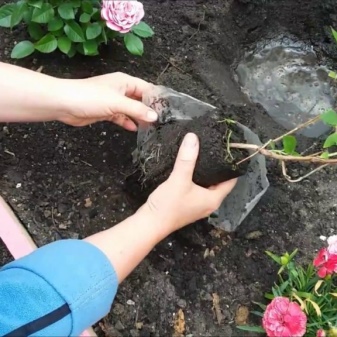
An equally important condition for growing jasmine is temperature. This indicator is especially important for indoor species that prefer temperatures from 18 to 24 degrees. For the winter, the plants are transferred to a cool room with a temperature of 10 degrees and left there until spring. If the jasmine is left to winter in a warm room, then it will begin to actively build up its green mass and will not bloom.
When choosing a site, planting density should also be taken into account. The distance between adjacent bushes should be at least 1 meter. With a closer arrangement, the plants begin to compete for resources and prevent the growth of rhizomes from each other.
If you plan to use jasmine as a hedge, then the distance between adjacent bushes should be at least 50 cm.
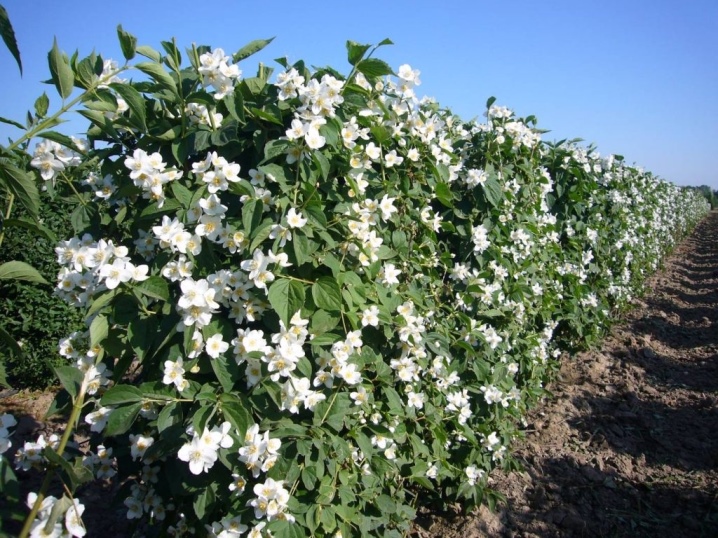
How to plant?
Planting jasmine in open ground should begin with the selection and preparation of planting material.
- You can buy seedlings both in the spring and in the fall, and you need to do this only from trusted suppliers who will not sell a knowingly diseased plant. The choice of seedlings begins with their visual inspection, and first of all they pay attention to the roots (when buying bushes with open root systems). The roots of the plant should be slightly moist and healthy, without visible fractures and signs of rotting.
- Only those seedlings on which buds have not blossomed are suitable for planting. If the bush already has several fresh leaves, then the plant may not take root. When choosing a bush with a closed root system, you need to look so that its roots are densely entwined with an earthen ball and are clearly visible in the drainage holes. Otherwise, it may turn out that he was specially planted in a container in order to hide diseased roots.
- Consider the size of the seedling and try not to buy too large plants. This is due to the fact that the bush with powerful branches has a voluminous rhizome, which was probably damaged when digging up. In addition, the adult jasmine managed to get used to its place, and it is not known whether it will be able to adapt to the new one. Therefore, the best choice would be a young thin sapling without leaves with a fragile root system.
- When choosing a seedling with open roots, you should pay attention to the conditions under which it is kept in the stall. Ideally, it should be slightly dug into the ground, which guarantees moisture retention in the roots and prevents them from drying out. Such bushes need to be delivered to the planting site as soon as possible, after wrapping the rhizome with a wet cloth. Upon arrival at the site, the root is placed in warm water for several hours. Experienced gardeners recommend making a clay and mullein talker and dipping the roots into it before planting.
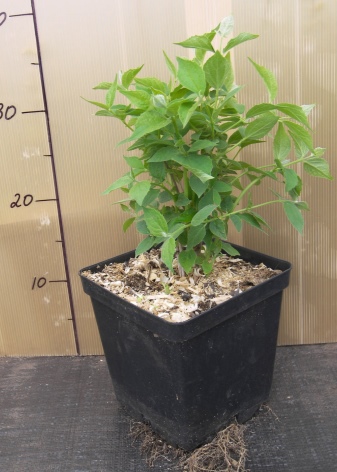
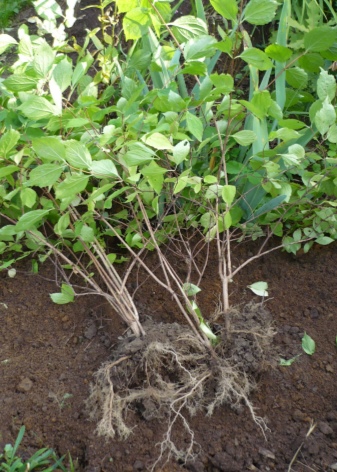
After the place and the seedling are selected, you can start the planting procedure. To do this, a hole is dug 50x50x50 cm in size and a drainage layer is placed on its bottom. Next, a layer of sand 5 cm thick is placed, and the nutrient mixture is poured on top of a mound. To prepare a nutrient substrate, take humus, sand and sod soil in a ratio of 1: 1: 2 and add 50 g of nitrophoska to them.
The seedling is placed on a mound, the root processes are carefully straightened and covered with the remaining substrate. The earth is lightly tamped, 15 liters of water are poured under each bush and the settled soil is poured. In order to avoid decay of the bush, the root collar is buried no more than 2-3 cm. The trunk circle must be mulched with sawdust, straw or needles.
When planting tall seedlings, they are immediately tied to a support that is erected before planting a bush. If this is not done, then the flexible stems during the growth process will take the wrong position and spoil the decorative qualities of the bush. As soon as the branches are fixed and begin to grow correctly, the rope is untied and removed.
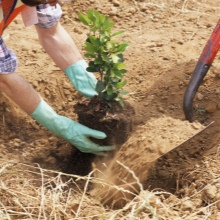
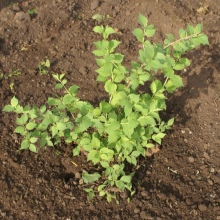
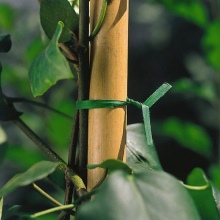
The established jasmine tolerates transplanting well, therefore, if necessary, it can always be transplanted to another place. Young jasmines up to 3 years old can be replanted every year, and older bushes - once every 2-3 years. The transplant is used in cases where it is required to plant densely overgrown bushes, competing with each other for nutrients and moisture. The transplant is carried out according to the same algorithm as the planting, and this is done only when the plant is not blooming. The best time to transplant overgrown shrubs is spring.
And in conclusion of the topic of planting jasmine, it is worth saying that the plant goes well with all types of conifers, with wolfberry, hellebore, crocuses, daffodils and snowdrops.
But fruit trees and shrubs cannot be planted next to jasmine: the bush begins to actively grow upward, penetrates into the crown of neighbors and significantly reduces their yield.

Watering features
Jasmine bushes usually have enough atmospheric precipitation, the only exceptions are too dry months. It is possible to determine whether a plant needs watering by the turgor of the leaves: with an obvious lack of moisture, they become soft and lethargic, and some even begin to turn yellow. In such cases, the bushes must be watered using up to 30 liters of warm settled water for each root. To prevent rapid evaporation of moisture, the mulching layer is increased to 7 cm. It is better to take soft and slightly acidified water for irrigation, but if this is not possible, then ordinary rain water will do.
Indoor species are watered as the top layer of the soil dries up, and in the summer they are also sprayed. Most types of jasmine love high air humidity, which is why specimens growing in seaside climates look much more decorative and richer than their relatives from drier regions.
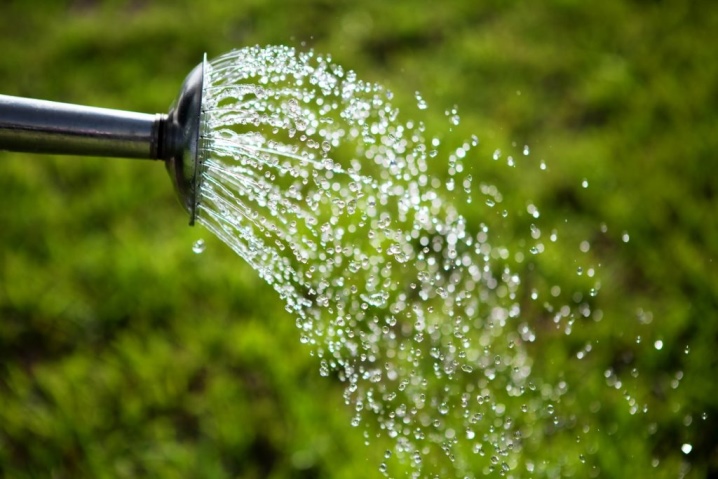
How and what to feed?
Jasmine care also includes regular fertilization. The plant begins to fertilize from the second year of life and is fed 2 times per season. The first feeding of a two-year-old bush is carried out in the spring, using a mullein solution for this. A year later, a complex of mineral fertilizers is added to the organic matter, consisting of 30 g of superphosphate, 15 g of potassium sulfate, 15 g of urea and 10 liters of water. At the end of the growing season, 150 g of wood ash is poured under each bush and well watered. Some gardeners additionally feed the bushes in July, using potash-phosphorus compounds for this. However, you should not get too carried away with feeding. Excessive addition of additives can lead to a depletion of flowering and reduce the decorative effect of the bush.
As for indoor species, they are fertilized once every 2 weeks., alternating with organic matter with mineral fertilizers until the plant blooms. During flowering, the crop is not fertilized.
In autumn, the amount of dressings is gradually reduced to one per month, and in winter they are completely stopped.
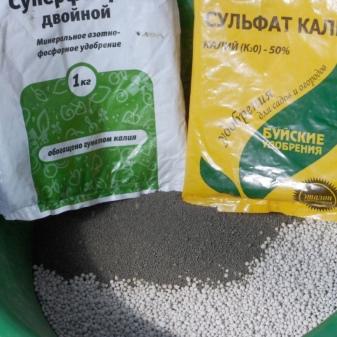

Types of trimming
Jasmine needs annual pruning, without which the shrub loses its decorative effect and begins to hurt. This procedure helps to rejuvenate the plant, noticeably prolongs flowering and increases the number of flowers. There are 4 types of pruning, each of which has its own goals and is performed at a specific time.
Sanitary
This type of pruning is needed to remove damaged, dry and diseased branches in order to avoid decay and the spread of infection. You can remove unhealthy branches at any time during the growing season, regardless of whether the plant is blooming or not.As for dry and damaged branches, they are pruned in early spring, before sap flows and buds awaken.
Weakened shoots are not completely removed, but only shortened by half, processing the cut site with garden pitch.
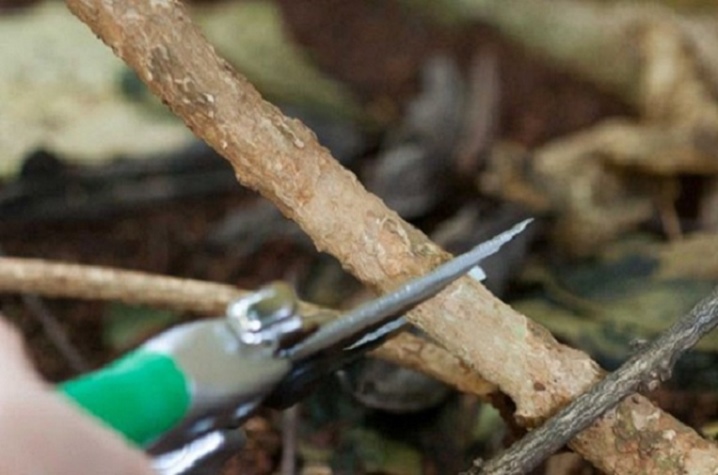
Formative
This pruning is purely decorative and is done in early spring or late winter. Mature bushes grow very quickly and rather asymmetrically, which is why they lose their attractiveness over time. This is due to the different growth rates of young and old shoots, as well as uneven lighting of the bush. Work on the correction of the crown is performed before the awakening of the first buds, giving the bush the desired shape.
The first crown is made 3 years after planting, while removing the lower processes growing to the sides, and not up. Tall species are usually shortened to two meters, and undersized species are formed at their discretion, cutting off branches by no more than a third.
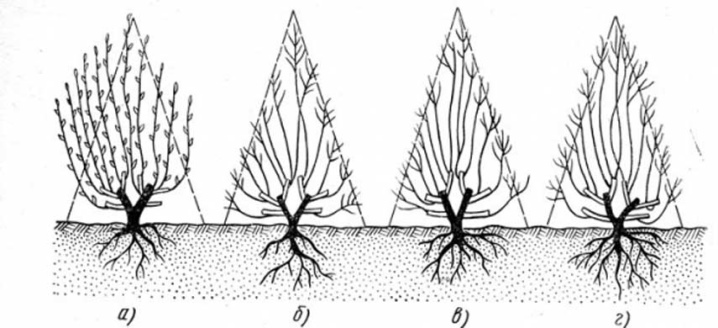
Rejuvenating
Over the years, jasmine grows, and old branches begin to spoil the appearance. Flowering is no longer so elegant, and the number of flowers is noticeably reduced. To maintain the bush in good shape and preserve its decorative qualities, rejuvenating pruning is carried out. To do this, in early spring, 5 adult branches are selected and shortened to 50 cm. All other shoots, as well as the lower underdeveloped branches, are cut at the root. All summer, the bush is watered and fed, and next spring all new shoots are cut off, leaving no more than 2-3 shoots on each of the stumps. Jasmine renewed in this way will bloom in 2 years.
Experts recommend completely rejuvenating the bush every 7-8 years.

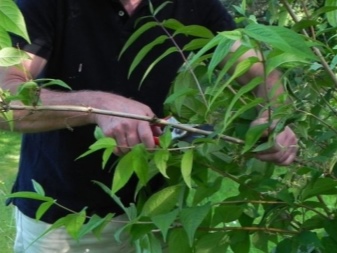
Thinning
Jasmine bushes thicken very quickly and need to be thinned out. To do this, in late January - early February, too thick, old and branched shoots are removed, cutting them at the root. If you did not succeed in thinning the bush in the spring, then this can be done in the summer, immediately after its flowering.
Loosening and mulching
Mulching is a must for jasmine care. It provides moisture retention in the root zone. Coniferous cones, needles, straw, sawdust, peat and dry foliage are used as mulch. In addition to the moisture-saving function, mulching inhibits the growth of weeds in the near-stem zone and prevents fungus from appearing.
Loosening is also a mandatory agrotechnical procedure and is performed as the land around the bush hardens.
The loosened soil allows air to pass through well, improves gas exchange in the roots and does not allow the liquid to stagnate in the root zone. In addition, weeds are removed by loosening.

Wintering
Adult jasmine bushes tolerate low temperatures well and can overwinter without additional measures. Young plants are more sensitive to frost, and therefore special attention should be paid to their preparation for winter. To do this, in the fall, after all the leaves have fallen off the jasmine, the earth around the bush is well dug up, trying not to damage the roots. Then the trunk circle is covered with a layer of compost, needles or manure, and the bush itself is carefully wrapped in a covering material and tied with a rope.
In Siberian and northern regions, especially in conditions of cold and windy winters with minimal rainfall, it is recommended to cover adult bushes. At the onset of the first thaws, the covering material is removed, otherwise the plant will begin to flutter under it.
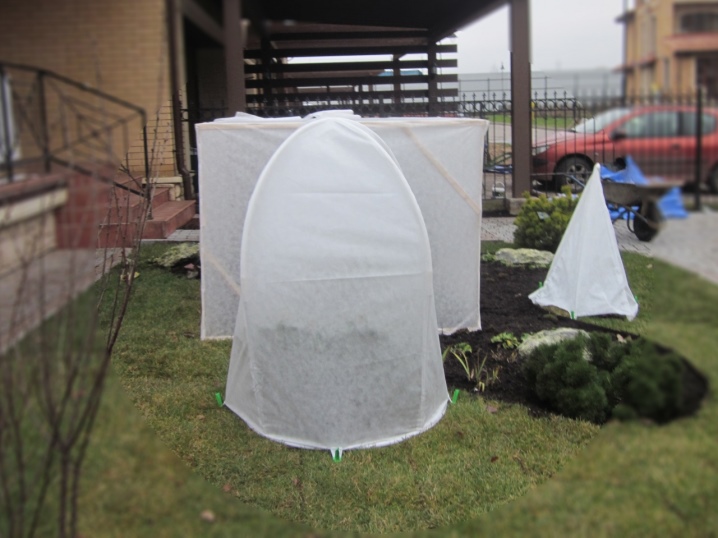
Possible growing problems
In order to grow a beautiful and healthy jasmine, it must be properly cared for. With poor care, the bush does not bloom for a long time, it loses its decorative effect and begins to hurt. Below are the most common problems encountered during cultivation, as well as ways to eliminate them.
- If the jasmine is too actively growing the green mass, but is not going to bloom, then the reason for this is an excess of nitrogen.The situation will be corrected by the termination of fertilizing with nitrogen-containing preparations and the introduction of potassium-phosphorus fertilizer into the soil.
- Curling and then falling foliage indicates low humidity and poor watering. In such cases, regular irrigation of the crown of the bush and more frequent watering helps.
- If the jasmine stops blooming and begins to suffer from fungal diseases, then the matter is most likely in the stagnation of water in the root zone. To fix the problem, you need to dig a bush, put drainage on the bottom of the pit and plant the jasmine in place. In the future, do not forget to loosen the trunk circle and from time to time renew the mulch layer. If, after the measures taken, the jasmine continues to suffer from excessive moisture, then it is worth finding another place for it in the garden. The way out of the situation may be to transplant the bush to a higher and dry place.
- If flowering is present, but proceeds very sluggishly and for a short time, then the reason may be the jasmine being too close to other bushes, or in its old age. In the first case, the shrubs are planted away from each other, and in the second, they wait for the onset of spring and begin to rejuvenate the bush.
- If the leaves of jasmine began to turn yellow, then the matter is most likely a lack of nutrients in the soil. The introduction of drugs with a high potassium content will help to correct the situation.
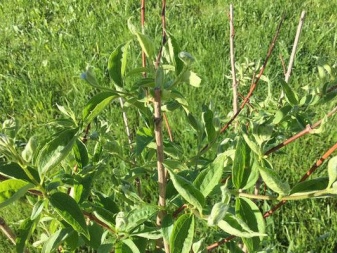

Jasmine is very rarely sick, and its main enemy is parasites. The plant is often attacked by spider mites, aphids and mealybugs. If insects are found, thoroughly wash the bush from the hose. This will increase the humidity and wash away some of the parasites. Then you can try to remove insects with folk remedies, for example, tobacco infusion. To do this, take 250 g of tobacco leaves, 50 g of laundry soap, add 3 liters of water and treat the bush with the resulting solution.
According to gardeners, 2-3 sprays are enough for the complete destruction of insects. If this does not help, then you can use the means "Apollo", "Neoron", "Akarin", "Iskra", "Aktaru", "Fitoverm" and other insecticides.



For information on how to properly plant and care for jasmine, see below.
































































The comment was sent successfully.